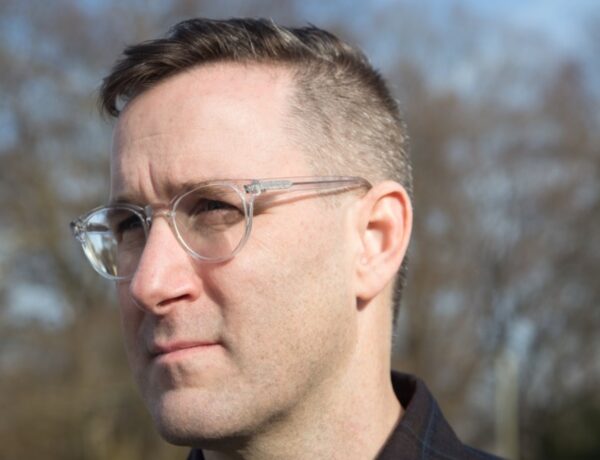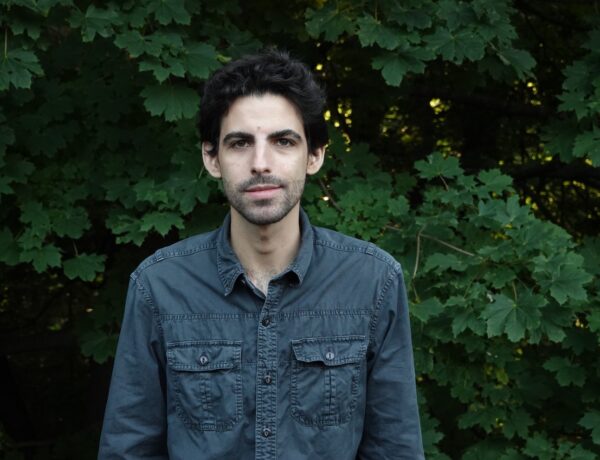Janice Lee is a Korean American writer, spiritual scholar, and shamanic healer. She has authored eight books encompassing fiction, creative nonfiction, and poetry, including titles like KEROTAKIS, Daughter, Damnation, Reconsolidation, The Sky Isn’t Blue, Imagine a Death, Separation Anxiety, and a collaborative novel A roundtable, unanimous dreamers chime in.
Her work often delves into themes like interspecies communication, inherited trauma, and the Korean concept of han. Lee also teaches workshops on inherited trauma and healing, integrating various spiritual practices. She is based in Portland, OR, serving as the Operational Creative Director at Corporeal Writing and an Associate Professor of Creative Writing at Portland State University.
Hi Janice, your work covers a wide range of topics, from interspecies communication to the Korean concept of han. How do these ideas intersect in your writing, and what draws you to explore them?
I’m interested in all the ways stories are told and received, not just through oral or written language, and those stories then hold infinite stories, and those stories are constantly under revision. One myth I’m currently working with is the Korean myth of Princess Bari.
From one vantage point, it holds the origin story of the female Korean shaman (mudang), but from others, it is about abandonment, grief, and trauma passed down matriarchal lineages. This is connected to the concept of han, which is also connected to the ways in which we operate always in multiple realms, between life and death, and what others can see that we ourselves aren’t always attuned to.
Separation Anxiety has been described as a complex and entangled text that explores inherited trauma, interspecies communication, and the dream world, among other themes. What inspired you to write this collection, and what was the writing process like?
It was partially a way for me to recover from the writing of my previous novel Imagine a Death, and the intensity of sitting inside that project for so long. It also came out of a short period of time that was compacted with grief and the anticipation of grief (one of my dogs had just passed, and my other one was dying, plus the death of my mother is present and there is also present an unconscious prophecy of my father’s impending death). So writing these poems helped me find the clarity of grief and process inarticulable moments of learning. I was also able to just find more space in and around language.
The collection weaves wisdom from your shamanic practice and the interstices of language, and also explores the difficult moments anticipating the deaths of beloved animal companions. How did your personal experiences shape this work, and what did you hope to convey to readers?
Partially I want to convey the clarity and wisdom that grief can come, that is, sometimes one has to go deeper into the darkness rather than to flee from it. This book too is an extended death ritual.
Your writing has been praised for its lingual sensitivity and courage to defy and engage uncertainty. Can you speak to your approach to language and how it informs your writing?
I’m interested in decolonizing narrative and language in storytelling, especially in writing about cultural and inherited trauma. There are so many structures that become defaults or conventions, but habit doesn’t make truth. I’ve written about my relationship to sentences in particular here.
I’m constantly breathing into my relationship with language but also accepting that not everything will and be articulated via language (at least not written language). In Separation Anxiety too, one of the man forms of “separation anxiety” I’m investigating is around language: Korean is my mother tongue, in that it’s present in a very felt way in my body, but I was born in the United States and spoke English growing up, so the relationship I have with Korean is a complex one.
One of the recurring themes in Separation Anxiety is the idea that living fully requires embracing transformation, including the transformation of those we love and ourselves. How have you embraced transformation in your own life, and how does this theme resonate with you?
Probably the hardest transformation to embrace is that of death — the transformation of living that is also dying. One of the lessons I’m relearning all the time is that of letting go in a way that honors and mourns and opens up space for love, rather than remaining attached or too constricted.
In addition to writing, you also teach workshops on inherited trauma, healing, and writing. Can you share with us a bit about your approach to teaching and how you incorporate shamanic and energetic healing into your workshops?
As a teacher and healer, I hope to find new ways to sit in uncertainty and indeterminacy with my students, to find new methods of asking questions and using direct experience to listen, receive, re-attune. I hope to find new ways to encounter and catalyze transformation and to listen more deeply to the world outside of my own, to other worlds, to other species, to worlds I may not be aware of yet.
How do you balance the various aspects of your work, from writing to teaching to shamanic healing? Do you have any tips or practices that help you maintain balance and creativity in your life?
Mostly remembering to breathe and to leave space in all aspects, and allowing these practices to become more and more entangled, rather than trying to keep them separated. More porosity, permeability, acceptance.
Can you tell us about your writing routine? What does a typical day look like for you?
I don’t write every day; I’m terrible with habits. So I write in condensed periods. I might stay at the coast for a few days and sit with a particular project. Or I might work really intensely with a project for a few weeks or months at a time (mostly during summers or breaks).
If you could have a conversation with any author throughout history about their writing routine and creative process, who would that person be?
Rather than a conversation with a human author, I would love to have a conversation with the mother whale singing into the night, the raven building their nest, the snail who has left a glorious trail on the sidewalk. Or Princess Bari, perhaps I might like to talk to her. And to her mother.
I’d love to know about the books you’re reading at the moment. What have been some of your favorite recent reads?
A recent book I loved is The Flowering Wand by Sophie Strand. I also recently reread Dictee by Theresa Hak Kyung Cha, which I’ve read many times now, but find new resonances every time. And currently I’m deep in Opening to Darkness by Zenju Earthlyn Manuel.
What does your current writing workspace look like?
Currently I’m at the Oregon Coast for a few days so my writing space today looked like this:




No Comments